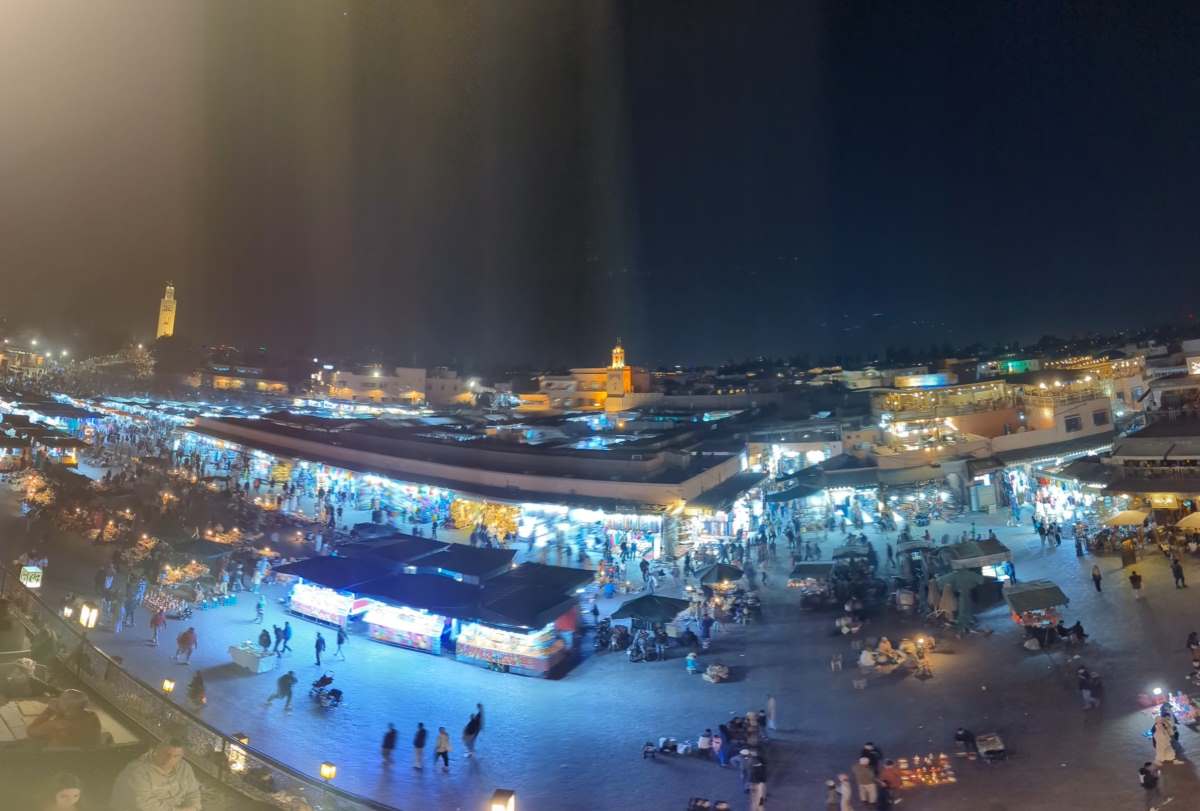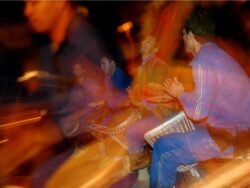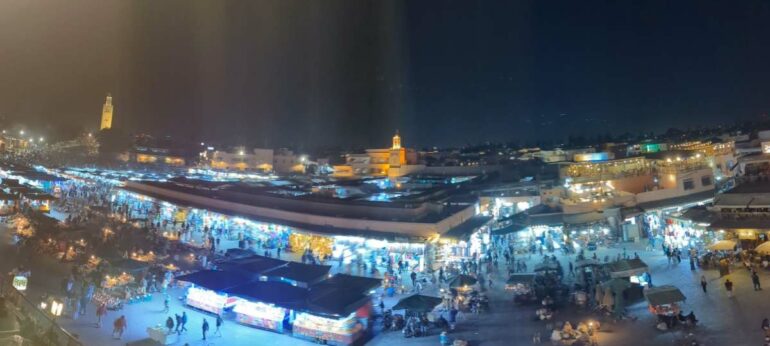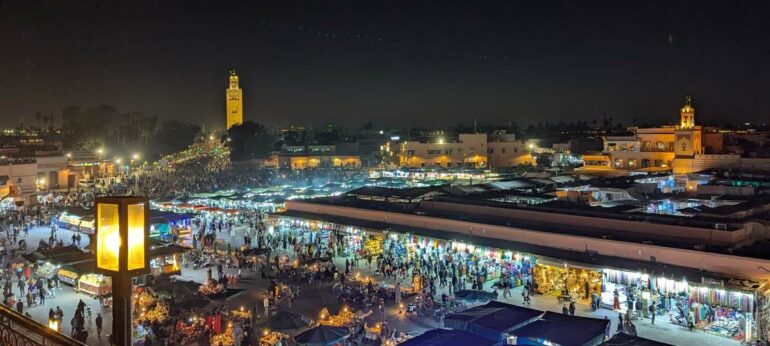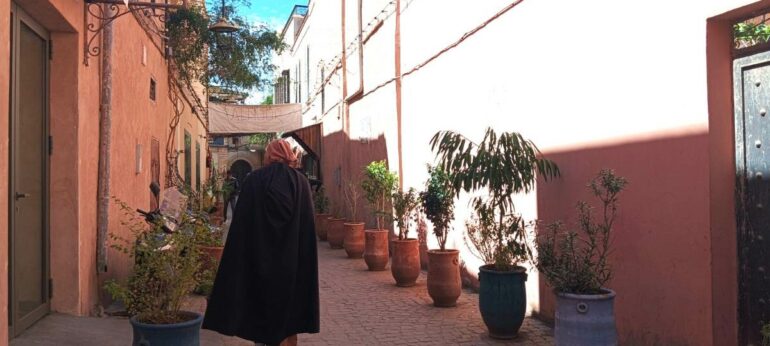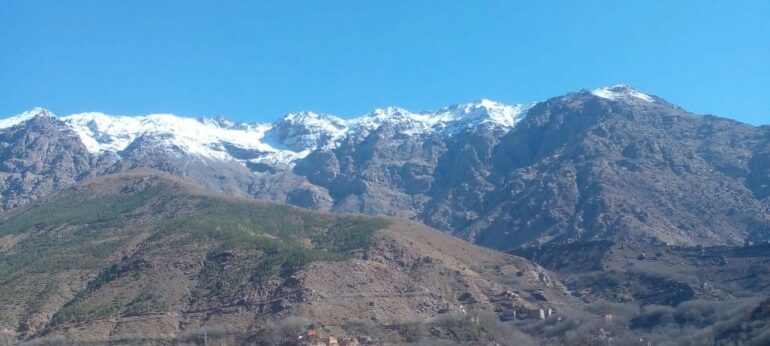Jemaa El Fna Square
10 minutes from the Riad Dar Taliwint, Jemaa El Fna Square: How to describe the indescribable? From the end of the afternoon and until late at night, it is a whirlwind of sounds, voices! The screams, the haunting rhythms and the interwoven music are unleashed. Dancers, gnawa musicians, acrobats, colourful water-bearers, snake charmers also catch the eye.
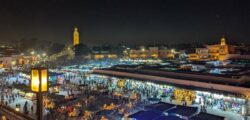
The pleasant and spicy smells of restaurants, quickly installed in the late afternoon, add to this total party senses! During the day, sellers of squeezed juices, orange, avocado, mango, strawberry, pomegranate… vendors of dates or dried fruits are the kings of entertainment! They harangued the passers-by, competing with jokes and charming smiles. They have to attract the audience and the competition is fierce. A moment spent with them is obviously refreshing and always joyful!
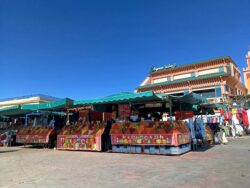
Around 16:00 the setting up of restaurants takes place. The choreography is well known to all, well orchestrated and well-rehearsed and the timing is perfectly controlled. At night, the lights and lanterns will complete the staging of the show.
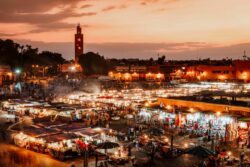
Observing the Square and its frantic bustle from a roof top is fun but being in the heart of the action is irreplaceable!
Jemaa El Fna, a concept for tourists?
Those who will tell you this, do not know the history of this place out of time. Initially a place of public executions, trade and exchanges, it was designated as a “performance venue” in the 16th century. History is stubborn! Since its existence, the Square has always been the nerve centre of the city of Marrakech.
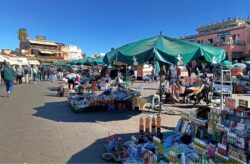
First, a meeting point for the southern caravans who could exchange their stuffs, deal with their business there. They could eat, find accomodation and have fun while listening to the musicians or storytellers.
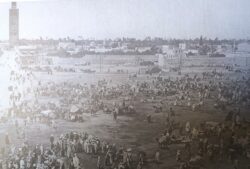
One could also get dental care or see a doctor. Other activities such as divination, henna tattooing and water delivery still take place there.
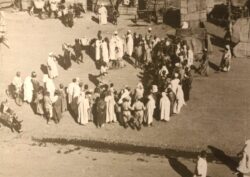
The development of tourism has only extended this function of festive gathering and given it a worldwide echo. But, throughout the year, the Marrakchis, the locals love to meet eachother on the Square, mainly in the evenings, have dinner and have fun in this unique atmosphere.
The Halkas
To attend these performances in the open air, without stage, without curtains, the spectators form “halkas”, sorts of informal circles around the artists . Thus, they can move from one show to another, leaving their contribution.
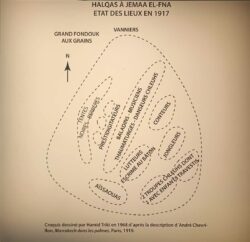
A large halka means success for the artists and attracts more passersby. Musicians of all styles, dancers (sometimes travestis), magicians, barkers, compete for tours to seduce spectators and collect their contribution.
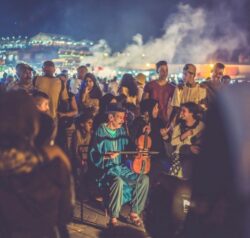
Everyone, young and old, enjoys the show, laughs at the anecdotes and mythical stories of storytellers, gets scared before snake charmers, admires the agility of acrobats… It should be noted that the role of storytellers has been essential, not only for the oral transmission of fascinating stories that enchant the public, but also to contribute to the influence of this unique place.
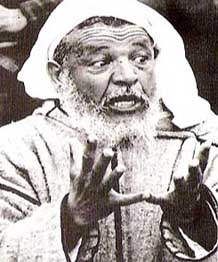
The Jemaa el Fna Intangible Heritage Museum
This Museum opened recently in order to trace the history of this magical spot. It shows precious documents, installations and old unreleased films.
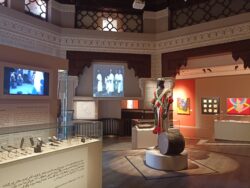
Jemaa El Fna square was inscribed in 2008 on the UNESCO Representative List of the Intangible Cultural Heritage of Humanity. But since 1922 it was protected as a place of cultural exchanges.
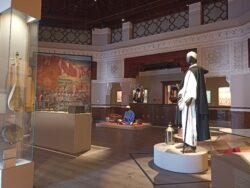
The Square offers an extraordinary variety of oral traditions of a country. This culture is expressed through many different artistic forms.
But it is much more! Wandering on Jemaa El Fna Square is a journey into the heart of universality and timelessness!

